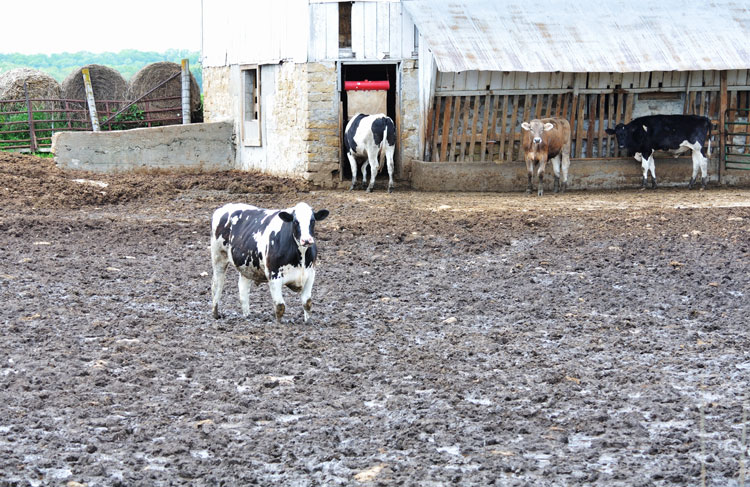
Temperature swings and rainy days are often par for the course when it comes to spring. Although warmer weather is welcome after a cold winter, it can leave cattle housed in outdoor yards standing in mud. Bill Halfman, a University of Wisconsin-Madison Division of Extension county-based agriculture agent, addressed the impact poor weather conditions and dirty lots can have on cattle during the I-29 Moo University Dairy Beef Short Course.
In Northern climates, the months of November to April can bring cold and wet weather challenges. While freezing temperatures, muddy pens, and wet hair coats would have a similar effect on dairy heifers and cows, Halfman spoke specifically about dairy steers in this presentation.
“Almost every decision we can make in our dairy steer enterprise can influence our return on investment,” he shared. He said decisions can be grouped into two general categories: those that influence growth and performance, and those that are overhead costs and non-feed related expenses utilized or allocated to the enterprise.
“Some of them have a domino or additive affect,” he said. “If we are not doing well in one area, it can fall over into others.”
One such management area is pen cleaning and bedding. Studies in beef cattle have shown that matted, dirty coats exacerbated the impact of cold stress, and a wet hair coat made it even worse.
“We know it’s important in wintertime for cattle to have a clean, open hair coat that can trap that air and serve as insulation. If it’s not clean, we start seeing declines,” he explained.
Halfman illustrated this point by sharing a study in which cattle with wet and muddy hair coats had half a pound less of average daily gain, a pound more feed needed per pound of gain, and an extra 35 days on feed before finishing. This all contributes to additional rearing costs.
When it is cold and windy and the feedbunk is outside in an open area, Halfman said there is a point where cattle just won’t go out to eat. This is especially important to note for dairy steer raisers, as Holsteins are more susceptible to cold stress because they have thinner hides and a thinner subcutaneous fat layer.
Mobility a problem, too
As for mud, Halfman shared that a layer of mud and manure at a depth as shallow as the dewclaw elevates the energy cattle expend simply walking around. He compared it to how humans feel walking in winter boots rather than shoes.
He said muddy pens also elevate the chance of feet and leg injuries. Wet feet are softer, raising the risk of digital dermatitis and foot rot. These ailments can lead to mobility problems and impact an animal’s fitness for transport.
Halfman said that providing clean pens and adequate bedding is especially important for farmers raising dairy beef. “Dairy steers face a greater impact from dirty, wet conditions than beef steers,” he noted. In addition to the increased cost of gain during the stressed season, Halfman said more days on feed, the amount of feed needed, and extra yardage costs all add up.
“The differences may appear to be small on a daily basis during normal winter weather, but over several months and several head per pen, the small differences add up in a hurry,” he shared.








